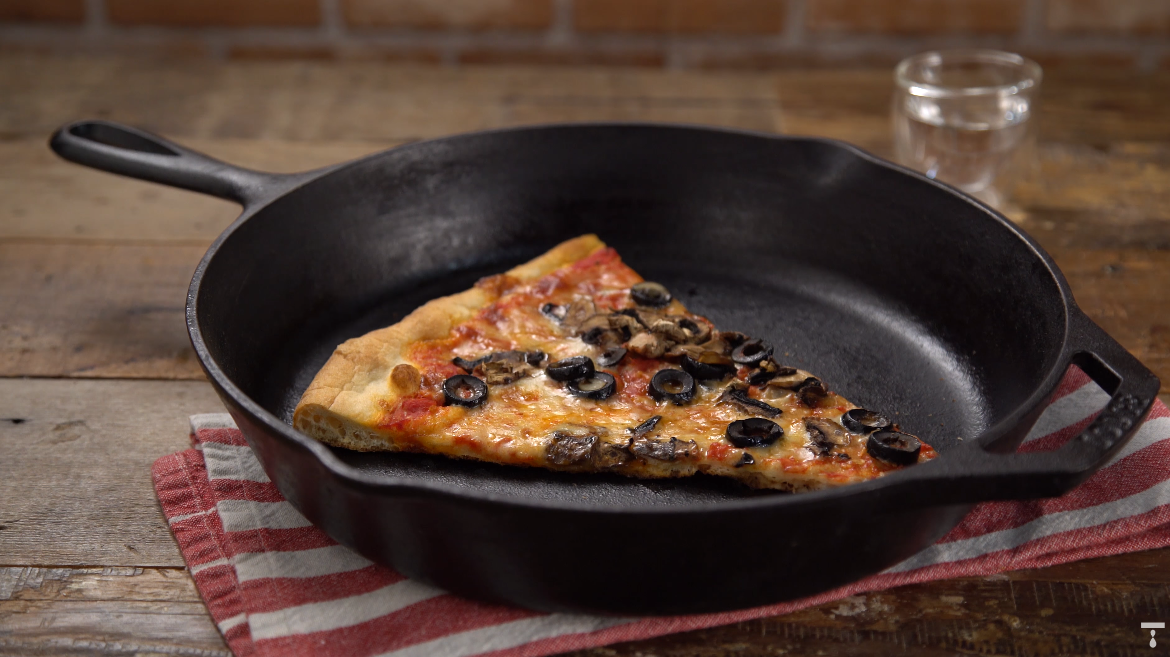Ordinary people will have difficulty identifying the difference between a skillet and a frying pan. Some people use the two names interchangeably, others believe there is a significant distinction. Skillets and frying pans are not the same things, despite popular belief.
A chef who has spent a significant amount of time in the kitchen will know which skillet or frying pan to use for a specific meal. This article will explain the similarities and differences between a frying pan and a skillet.
Frying pan
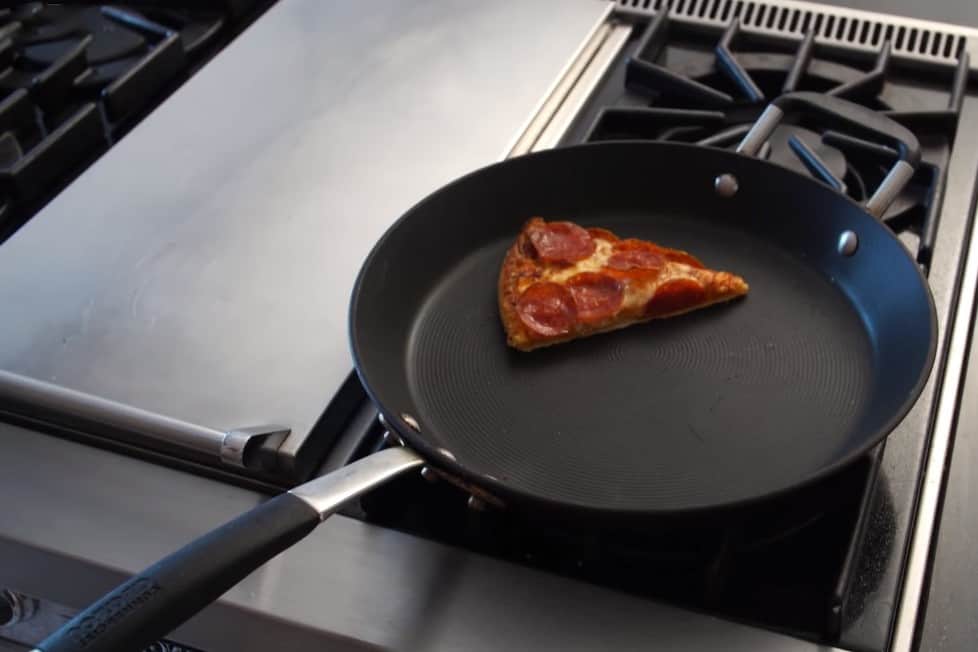
Frying pans have long handles and are often shallower. These pans aren’t designed for slow cooking or braising. Despite having flared sides, the pans are just slightly taller.
The frying pan should be light enough for you to lift and move. You should feel safe when cooking because the handle should remain cool. The frying pan is useful for browning, scorching, and reducing the temperature of your food quickly.
You can’t go wrong with a frying pan in the kitchen because it can be used for various purposes. Because frying pans are smaller and thinner than skillets, they heat up faster. As a result, your food and pan will be evenly and rapidly heated.
Skillet
This pan has a flat bottom and flared edges that may be slightly curved. It is often used for cooking. Some skillets, such as copper, cast iron, or aluminum, are coated with a nonstick coating to make cleanup easier.
This type of pan is frequently used for pan-searing, roasting, and deep-frying. Therefore it must be thick enough to effectively spread heat while remaining light and easy to handle. Cast-iron skillets are the finest for making fonds or browning meals with a crispy, textured crust.
Skillets come in various sizes, but the most common is a 12-inch diameter. The sloping edges of this pan make it ideal for stir-frying. Moving ingredients about in a skillet on a regular basis is another quick-cooking technique. This is the pan you use if you want to cook frittatas.
In the United Kingdom, skillets can also refer to larger, deeper, lidded pots or pans with long handles and legs. In the United States, the term refers to a dish constructed from a shallow skillet-shaped metal or ceramic pan and includes cooked diced veggies and meats.
What really is the difference between a skillet and a frying pan?
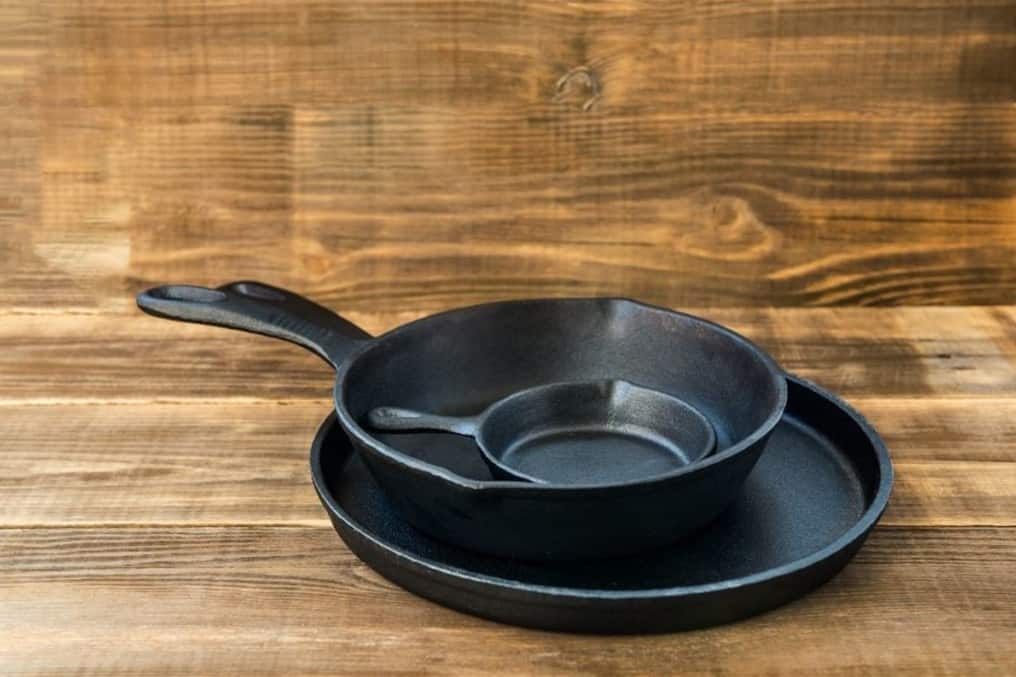
Frypans and skillets have almost the same appearance and function in cooking. You are excused if you think they’re the same kitchen item. They are spherical and have sloping edges when compared to a sautéing pan. Let’s start with a couple more major distinctions.
Some people believe there is little difference between the two, while others disagree. Their similarities and differences are evident. The only significant distinction between skillets and pots is that skillets are deeper. They are typically at least 2 inches deeper (including the lid) than frying pans.
They can also be found in a variety of materials. On the other hand, frying pans are a fantastic tool for frying, blistering, and browning food due to their flat bottoms and lack of a top. They’re ideal for high-heat grilling and frying, as well as shallow and deep-frying. There are also aluminum and stainless steel alternatives.
As a result, various frying pans are available that blend the best of both worlds. Frying pans differ from French skillets. Higher sides give them a more open feeling. They do appear to be quite similar, however.
The two can be used interchangeably for grilling, roasting, stewing, and frying. There is no distinction between the two when it comes to cooking. A frying pan, for example, can be used in place of a skillet and vice versa.
A frying pan is the best nonstick cookware for quickly heating up. An oven-safe skillet is a great option if you like thicker and deeper cooking tools.
| SKILLET | FRYING PAN |
| Cast iron material | Aluminum, stainless, and ceramics material |
| The non-stick surface requires seasoning | No seasoning needed |
| Use in searing, braising, and roasting | Perfect for quick and easy shallow frying |
| Can be used in the oven | Not suitable to use in the oven |
| Harder to clean after using | Cleans easily |
| Cannot be submerged in water | Can be submerged in water when washing |
| The heaviest pan | Light-weight |
| Can handle extra high temperature | Cannot be used in high temperature |
| Heating needs a longer time | Burns your cooking easily |
| Thicker and deeper than other pans | Thin and shallow |
| Increases the food’s iron content | Scratch-free and rust-free |
| Some are not non-stick | Requires less oil |
Uses of Frying Pans
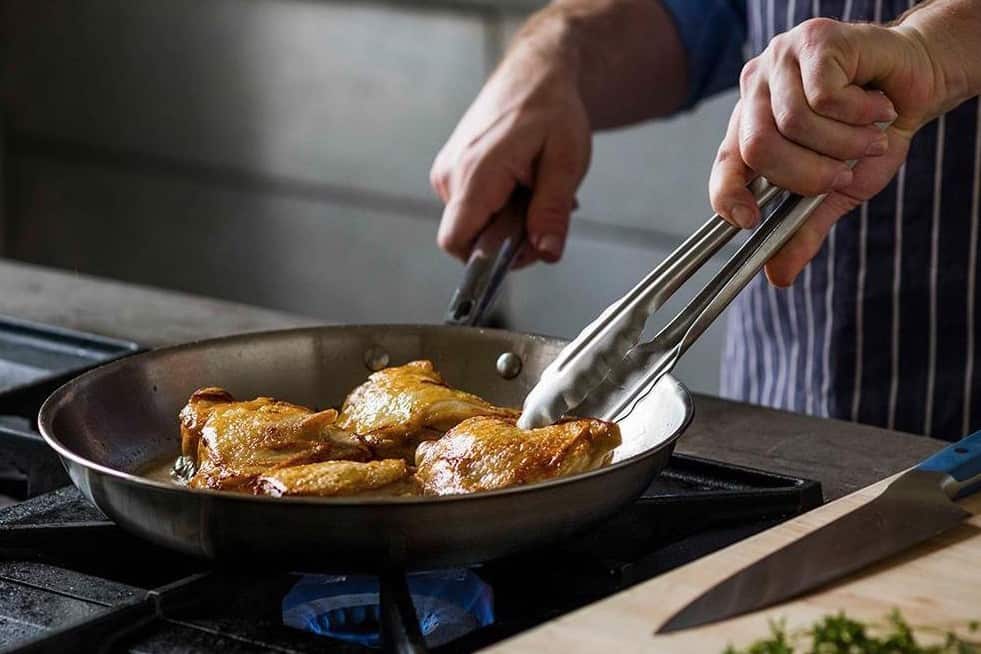
If they don’t contain a lot of liquid, frying pans can also be used for a braise, poach, shallow fry, searing, and pan-frying.
Because of their shallowness, these pans are perfect for flipping and shaking objects. Because frying pans are often thinner than skillets, they heat up faster. This ensures that the pan and food are evenly and quickly heated. Furthermore, the flavor is retained because a frying pan heats up quickly.
On the other hand, a frying pan can be used for far more cooking chores than a skillet. Frypans with nonstick coatings allow you to use less oil, resulting in healthier cuisine.
Uses of Skillet
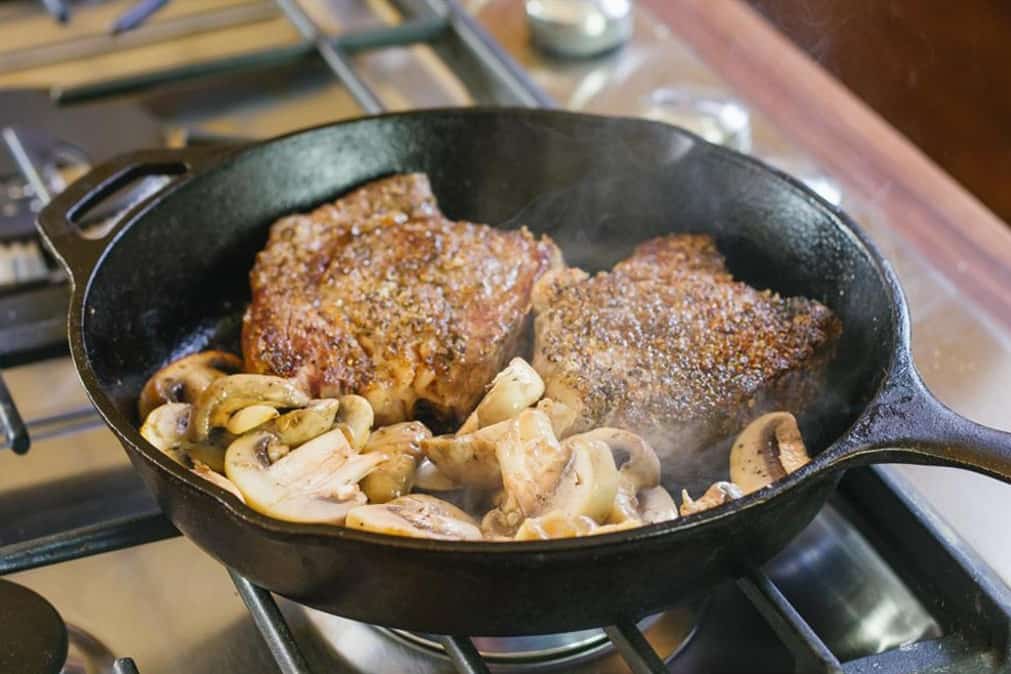
People are concerned about peeling because nonstick coating peels if used to cook at extremely high temperatures. Extreme temperatures are not a problem for cast iron skillets, however, they must be pre-seasoned to maintain their quality over time. Most iron skillets are safe to use in the oven.
Cooking meat, fish, and vegetables on a cast iron pan have a rustic beauty all its own. The sear marks added flavor to the dish and the natural smoking of the seasoned pan adds excitement to using a cast-iron skillet. This makes the skillet pan a must-have pan for each aspiring chef. They are also exceptionally long-lasting, lasting for many years.
Difference between a skillet and sauté pan
A sauté pan’s straight edges and larger surface area make it ideal for tasks like searing meat or reducing pan sauces. A skillet’s sides are slanted. This pan’s slanted edges make it excellent for stir-frying and other quick-cooking methods that require a lot of movement in the pan.
A sauté pan is better suited than a stockpot for holding liquids, reducing splashing, and cooking many foods at once. The biggest disadvantage of the sauté pan is its size. You’ll notice this since the 12-inch sauté pan is significantly larger than the skillet.
You may not realize it, but the skillet’s distinctive form makes it an excellent tool for stirring, flipping and sautéing food. As a result, the sauté pan is likely to be the one you use the most in your kitchen.
Difference between frying pans and sauté pan
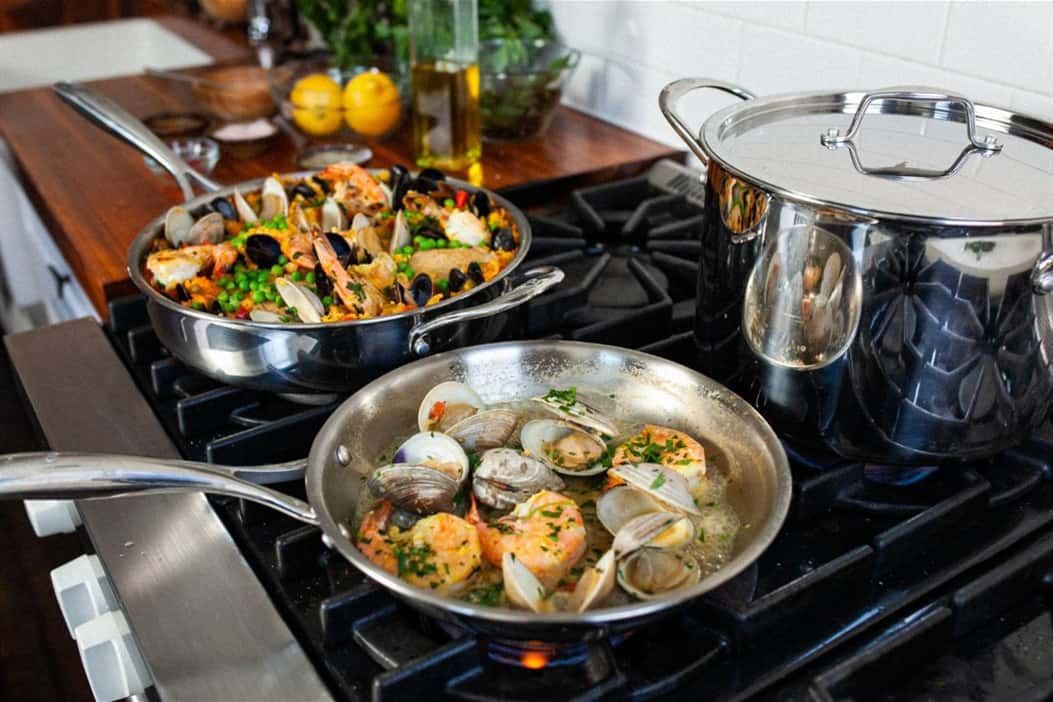
The sauté pan gets its name from the French term “Sauter,” which means “to leap,” while the sloping sides of a frying pan refer to its capacity to make a “jump-flip” action when cooking. You can cook a lot of food in a saute pan without spilling.
A sauté pan on high heat with oil or fat is used to fling objects back and forth into the air. Food cooked in this pan should have a golden crust and not be soggy at the bottom. Frying pans have slanted edges that allow cooking in a “jump and flip” motion. Using this strategy, you can cook quickly and evenly. It is easier to add and shake things into frypans than saute pans.
| Saute Pan | Frying Pan | |
| Advantages | It heats up quickly with excellent storage space. It can be used in cooking at high temperatures.
| It’s a great tool for mixing and flipping ingredients because it’s so light. Cooks at a consistent temperature with a longer-lasting heat source. |
| Disadvantages | The heat doesn’t last as long and they’re more difficult to carry around the kitchen because they are heavy. | Heating takes time and a smaller cooking area because of the sloped sides. |
| Shape | It has a flat base, high sloping sides, and a long handle, and some include a short assist handle on either side. | It has a long handle, flat base that extends upwards on the sides. |
| Materials | It is made of thick gauge material and a thick bottom giving it the ability to tolerate extreme temperatures. They are built of copper or aluminum, which is extremely conductive, so the entire pan is uniformly heated. | To keep the pan hot when flipping/moving away from the heat, it is made of a durable material such as stainless steel or carbon steel. |
Conclusion
Frying pans and skillets have numerous functions that make them kitchen essential. On the other hand, cooking using a cast-iron skillet has its own distinct flavor. Using a skillet to cook feels like a special occasion.
Invest in a high-quality frying pan if you want the most versatility when cooking. Get a skillet if you need a specialized strategy for a certain reason. If you want versatility and a pan that you can use on some special dishes you can get both.
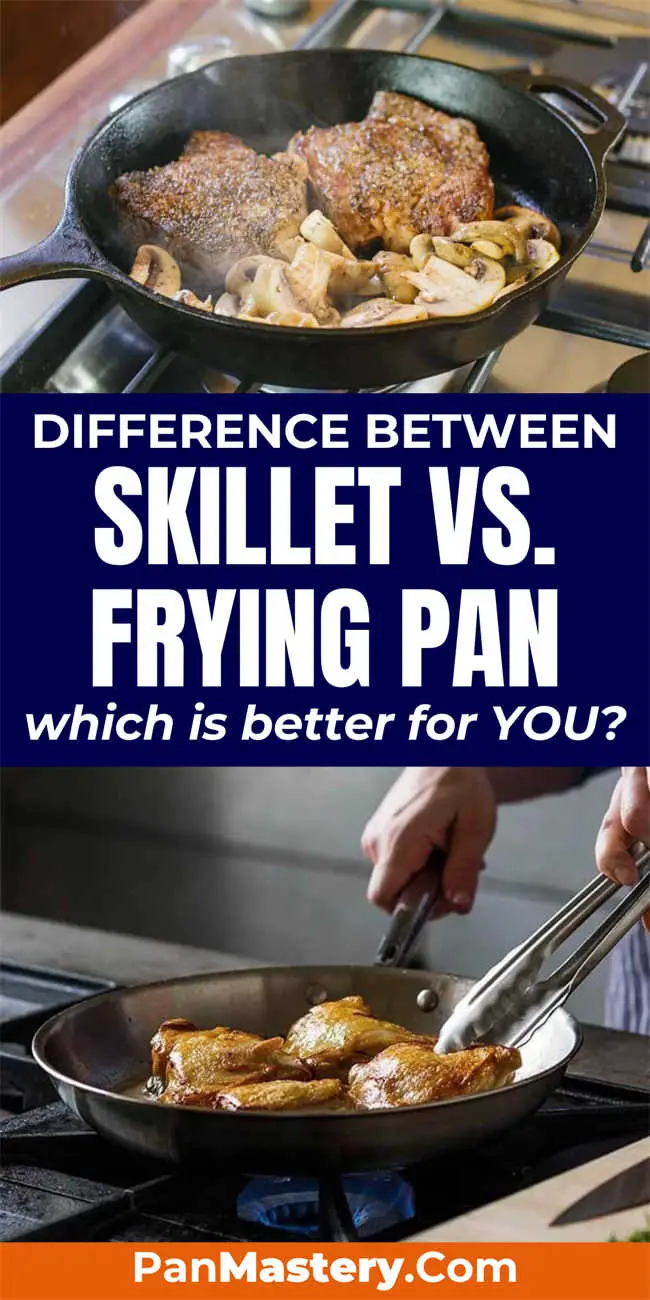

Michael Johnson is the founder of Pan Mastery, Inspired by his blacksmith grandfather’s legacy has a deep appreciation for hand-crafted pots and pans, he provides invaluable guides, reviews, and recipes to enhance your culinary journey.

